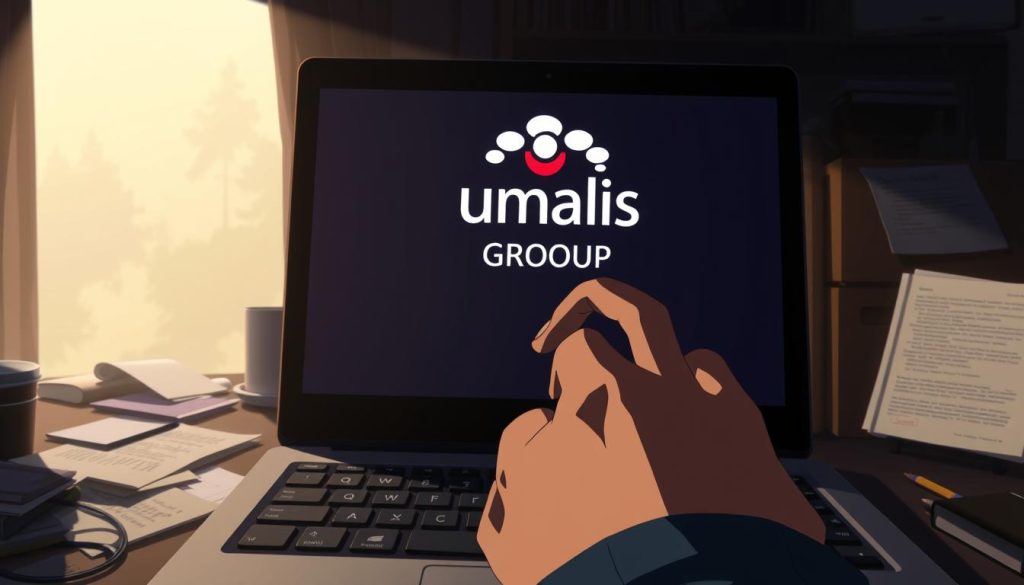Surprising fact: nearly one in three independents report income swings of 30% or more year-to-year, a scale that can derail plans and confidence.
We define job continuity for freelancers as steady engagements, predictable renewals, and reliable cash flow—not lifetime work at a single employer.
In a global market shaped by outsourcing, automation, and cycles of expansion and recession, your approach matters. Governments influence conditions via laws, and entreprises look for partners who reduce their risk.
We lay out a market-aware path: diversify clients, craft the right offer mix, and run disciplined operations. These steps raise your perceived reliability and improve your niveaux of protection over time.
What to expect: clear aspects to manage demand, portfolio design, pricing, contracts, and legal awareness. The goal is a practical, calm plan you can act on today.
Table of Contents
Key Takeaways
- Freelance continuity means repeat income and predictable renewals, not a single long-term employer.
- Diversified clients and a focused offer mix create a safety net similar to traditional emploi.
- Operational discipline and clear contracts increase how entreprises perceive your reliability.
- A 90-day plan can stabilize cash flow, upgrade expertise, and lock in retainer work.
- Avoid common missteps: overreliance on one client and vague scopes that erode stability.
Understanding job security for freelancers today
Being your own employer shifts the meaning of continuity from tenure to predictable throughput.
Continuity of work for independents means a steady cadence of projects, retainers, or call-offs that cover capacity and cash flow. It is a practical measure you can track and manage.
What “continuity of work” means when you’re independent
Concrete indicators: run-rate targets (70–80% booked eight weeks out), repeat engagements, and visible case studies that lower buyer risk.
Continuity also relies on market demande and your visible compétences. Targeting industries with steady needs reduces churn and raises your perceived valeur.
How demand, skills, and client stability shape outcomes
Emerging technologies can shrink or expand opportunities. Collaborate with automation rather than compete directly to improve your resilience and niveau.
| Driver | What to monitor | Action |
|---|---|---|
| Market demande | Sector growth, procurement cycles | Focus offers on durable industries |
| Client stability | Funding, retention history | Standardize stability checks |
| Personal risques | Uptime, responsiveness | Document routines and SLAs |
Use weekly pulse checks—reply rates, discovery calls, proposal cadence—to detect softening before revenue drops. Treat these small habits as key personnel levers that protect your ongoing engagements.
Job security vs. job stability: what independent professionals need to know
Near-term renewals and long-term career resilience are different measures—and both deserve attention.
Security means the likelihood of steady gigs and renewals in the coming months. Track pipeline coverage, renewal rate, and retainer income to quantify this. Use retainers, multi-phase scopes, and strong vendor metrics to raise short-term confidence.
Stability describes multi-year consistency across roles and domaines. Professions with steady demand show higher stability. Build transferable compétences, position in durable problem spaces, and diversify buyer personas across adjacent industrie to protect long-term value.
- Distinguish near-term renewals from multi-year viability.
- Optimize offers for frequent renewals while upskilling for sector shifts.
- Measure niveaux: pipeline for security; revenue by sector for stability.
| Focus | Metric | Action |
|---|---|---|
| Short term | Pipeline coverage, renewal rate | Create retainer tiers and add-ons |
| Long term | Revenue by secteur, upskill cadence | Stack skills and enter durable marchés |
| Automation impact | Task obsolescence risk | Specialize where judgment matters |
Balance exploitation of current offers with a weekly slot for exploration. If you want practical guidance on steady engagements, see our notes on job security.
Market forces that affect freelance job security
Market cycles, outsourcing flows, and new tools decide which engagements last and which vanish.
Economic expansions lift demand and confidence. Recessions compress budgets and trigger cuts. In the U.S., at-will hiring tracks these swings closely.
Outsourcing and offshoring lower predictability for roles that are easy to transfer. Automation does the same when tasks are repetitive. Move toward services that pair human judgment with technologies to stay valuable.
Different sectors show distinct profiles. Healthcare, education, and many public programmes often fund multi-year pipelines. Discretionary private projects may pause first.
In France and the EU, open-ended contracts and restructuring rules (for example, TUPE-like protections) change employer obligations. These protections do not automatically cover freelancers, but aligning with regulated secteurs can give steadier demand and less downside.
| Force | What to watch | Action |
|---|---|---|
| Economic cycles | Procurement calendar, year-end budgets | Build cash buffers and slow-period offers |
| Outsourcing & technologies | Offshoring trends, automation tools | Integrate tech; offer proximity and compliance |
| Industry profiles | Program length, public funding | Target healthcare/education/government pipelines |
- Anticipate cycles: expand lead gen during soft markets.
- Reduce risques: emphasize fast intervention and local language support vs. distributed teams.
- Design fallback offers: maintenance retainers and cost audits that remain fundable.
Spot the early signs of job insecurity in your freelance practice
Early warning signs often show up in small shifts: quieter inboxes, postponed calls, or a reluctance to propose new ideas. Catching these early lets you act before revenue takes an impact.

Behavioral and emotional signals that precede revenue dips
Emotional flags: constant worry about client cuts, over-reading stakeholder emails, and avoiding long-term planning. These feelings alter how you present offers and can reduce conversions.
Behavioral cues: fewer touchpoints, skipped updates, and reduced présence with clients. Hesitation to pitch bold ideas or delay proposals is often the first practical sign.
Self “pulse surveys”: simple weekly checks for pipeline health
Run a short weekly checklist to convert anxiety into facts. Track outreach volume, discovery calls, proposal acceptance rate, and days-to-decision by client segment.
- Add one wellness metric—sleep quality or stress level—to see how personal wellbeing affects delivery.
- If your niveau of pipeline coverage falls below eight weeks at 70% capacity, start a recovery sprint: outreach, content, and partner taps.
- Use a confidence barometer per account (green/amber/red) and schedule proactive value updates for amber accounts this week.
Practical result: replace vague anxiety with a simple dashboard. You gain clarity on the key aspects that protect continuity and strengthen your marché position.
Build resilient client portfolios for security of income
A resilient client portfolio reduces revenue swings and lets you plan with confidence.
Diversification means mixing sectors and contract types so one pause does not halt your cash flow.
Diversify across industries and secteurs with steady demand
Aim for an ensemble of 6–12 active accounts spread over two to three industries with offsetting cycles.
Choose secteurs with structural demand—public budgets, compliance windows, or ongoing maintenance—to lower downside risk.
Balance retainers, projects, and agency partnerships
Blend baseline retainers, growth projects, and agency partnerships to smooth lead flow.
Partner channels can backfill seasonal dips; formalize referral swaps with complementary independents.
Reduce concentration risk: cap single-client exposure
Keep any single client below 25% of annual revenue. If you exceed that temporarily, enact a 90-day plan to add two accounts.
- Maintain a visible waitlist and capacity calendar—scarcity signals reliability without overpromising.
- Track cohort retention by industry and double down on niches with the highest renewals.
- Use a simple credit policy and staged payments to de-risk cash flow while staying easy to buy for SMEs and mid-market entreprises.
For practical steps on expanding your roster, see our guide to diversifying your client base.
Skills, formation, and upskilling that protect your pipeline
Protecting your pipeline starts with a clear skills plan that maps buyer pain to what you can deliver. Keep this plan active and review it every quarter so your offers match market needs.
Prioritize in-demand compétences and emerging technologies
Focus on problems buyers pay to solve. Track one or two sector trends and pick the technologies that matter to those buyers.
Maintain a living skills map that links tasks, buyer outcomes, and toolsets. Update it quarterly to spot gaps early.
Stack expertise: combine technical ability with management and communication
Pair core technical strengths with facilitation, stakeholder communication, and simple project management. This combination raises perceived value.
Practice by running short client workshops, publishing teardowns, and documenting decisions. These habits show practical expertise and shorten sales cycles.
Use certifications and micro-credentials to signal qualité and reliability
Choose formation paths recognized by employers—vendor certs, ISO-relevant credentials, or public-sector frameworks.
Plan one major credential per year and one micro-credential each quarter. Capture outcomes in client metrics: time-to-value, error reduction, and compliance pass rates.
| Action | Cadence | Benefit |
|---|---|---|
| Skills map review | Quarterly | Align offers to buyer pain |
| Major credential | Annually (1 per années) | Signal deep expertise |
| Micro-credentials | Quarterly | Show continuous growth |
| Personal lab & publishing | Ongoing | Demonstrate readiness and boost sécurité |
- Show proof: short case snapshots that link outcomes to methods and certifications.
- Experiment first: build a small lab to test tools before client work.
- Measure impact: use client-facing metrics, not just deliverables.
Pricing, contracts, and risk management to protect your travail
A pragmatic commercial framework—rates, milestones, and explicit remedies—reduces surprise and preserves capacity. Use clear terms to turn uncertainty into measurable actions for you and your clients.
Retainers, cancellation clauses, and staged payments
Use retainers with defined service levels and simple rollover rules to anchor baseline revenue. Add a reasonable cancellation clause and an early termination fee to cover reserved capacity.
Prefer staged payments tied to milestones so risk and cash flow are shared. This funds working capital and avoids heavy deposits.
Scope control, change orders, and intervention protocols
Control scope with explicit assumptions and a lightweight change-order flow. Intervene early when signals deviate to limit rework.
- Intervention protocol: response times, escalation paths, rollback plans.
- Quality gates: acceptance criteria, demo checklists, post-launch stabilization.
Insurance, data protection, and basic compliance for entreprises clients
Maintain professional liability insurance and clear data-protection practices (DPIA where relevant). Keep compliance artifacts ready for larger buyers.
Price on value when you can, but set a minimum floor rate to protect margins and sustain quality management.
Operational habits that increase perceived reliability
Consistent operational habits make you easier to rely on and more likely to be rehired.
Small routines—on-time delivery, concise updates, and clear handoffs—build client trust quickly. Predictability often beats perfection when renewals are at stake.

On-time delivery, presence, and proactive status updates
Deliver on time relentlessly. Make meeting dates a baseline promise. Clients notice punctuality more than occasional polish.
Keep a steady cadence of updates: weekly notes, brief risk logs, and a clear next-step list. These items raise client confiance and improve perceived sécurité.
Documented processes, templates, and service levels
Systematize with SOPs, checklists, and templates so outcomes repeat across projects. This reduces rework and raises perceived qualité.
Publish simple service levels in proposals (response time, fix time). Share read-only boards from a lightweight project management stack to show real-time présence.
- Run post-project reviews and add lessons to a process library.
- Bundle maintenance at handoff to stabilize revenue between initiatives.
- Set clear availability windows and boundaries so reliability is measurable.
| Habit | Metric | Benefit |
|---|---|---|
| On-time delivery | % milestones met | Higher renewal rates |
| Proactive updates | Weekly status notes | Lower perceived risk |
| Published SLAs | Response & fix times | Differentiates your offering |
Why this matters: clients hire for outcomes and peace of mind. Good operational management signals both. Embed these habits and you protect your job and long-term sécurité while improving perceived qualité.
Sectors and métiers with strong ongoing demand
Some industries resist economic swings thanks to long-term mandates and public budgets. These fields offer steadier pipelines and clearer procurement rhythms for independents.
Healthcare, education, and public projects
Why they matter: public funding and regulatory cycles keep demand predictable. Healthcare and education fund digital, compliance, and operational work year-round.
Private security and safety-focused roles
The French private secteur is expanding, creating openings across surveillance, fire safety, and sûreté aéroportuaire.
Demand covers métiers such as surveillance, sécurité incendie, cynotechnie, protection rapprochée, and support roles for management and training.
Tech enablement despite automation
Automation shifts task mix but not the need for implementation, integration, training, and change management. These enablement offers remain in demand.
Practical steps for you:
- Target regulated programmes and compliance-driven briefs to smooth revenue.
- Build case studies per industrie to reduce buyer risk and shorten sales cycles.
- Calibrate capacity to hiring peaks—academic calendars, grant cycles, or event seasonality—to match demande.
| Sector | Typical métiers | Why steady |
|---|---|---|
| Healthcare | Digital ops, compliance, training | Public budgets and long procurement cycles |
| Education | Platform support, curriculum enablement | Academic calendars and recurring grants |
| Private security | Agent, surveillance, protection rapprochée | Regulation-driven demand and contract renewals |
Legal rights and protections: awareness for independents
Knowing your legal position as an independent clarifies which protections apply and which do not. In many cases, employee rules for salariés do not automatically cover freelance contracts. That distinction changes how you prevent and respond to disputes.
Wrongful termination concepts exist in U.S. law, but they normally apply to employees. Public-policy exceptions, however, may still matter where a client’s conduct violates clear legal duties.
Anti-discrimination laws—Title VII, the ADEA for those 40 and older, and the ADA—prohibit dismissals for protected characteristics or disability. For independents, these statutes shape buyer behaviour and expectations, even if direct claims are less common.
- Know the difference: employee protections for salariés are stronger than commercial contract remedies for contractors.
- Contract leverage: your protection comes from well-drafted terms, cure periods, and documented performance records.
- Whistleblower context: OSHA and Dodd-Frank give protected channels in regulated projects; set clear boundaries when reporting issues.
- Practical steps: include dispute-resolution and notice windows; keep approvals and change requests in writing; verify local procurement and IP clauses when working cross-border.
Record keeping is vital. Clear emails, signed deliverables, and dated change orders are often your strongest legal defence. They turn subjective claims into verifiable facts.
Finally, align your commercial practice with anti-discrimination norms and transparent processes. This reduces risques with larger entreprises and supports long-term trust.
A 90-day plan to strengthen your job security
Start with a focused 90-day sprint that turns uncertainty into measurable progress. This plan breaks the quarter into three clear sprints so you can act fast and prove results.
Days 1–30: audit risks and stabilise cash flow
Run a portfolio risk audit and enforce payment terms. Convert one active client to a small retainer for immediate stability.
Trim low-margin scopes, add staged payments, and send concise value recaps to revive two dormant accounts.
Days 31–60: formation, repositioning, warm outreach
Complete one targeted formation or micro-credential and publish a short case article to show fresh expertise.
Reposition offers toward durable problems and do warm outreach to 30 prior contacts.
Days 61–90: retainers, referrals, and measure impact
Package a maintenance retainer and secure two multi-month commitments with clear service levels and intervention rules.
Build a referral flywheel with three complementary providers and schedule quarterly partner reviews.
| Metric | Target | Cadence |
|---|---|---|
| Weekly outreach | 30 contacts | Weekly |
| Recurring revenue | 2 retainers | By day 90 |
| Credential | 1 micro-cert | By day 60 |
By day 90 you should have better lead-time visibility, a baseline of recurring revenue, and one new credential that compounds over the next années.
Conclusion
, Turn intentions into repeatable practice: audit your portfolio, prioritise the highest-impact levers, and follow a short management rhythm that keeps pipeline and delivery aligned.
Practical next steps: stabilise revenue with at least one retainer, publish concise proof points, and add one micro-credential that maps to your chosen secteur.
Treat each engagement as a reusable asset—templates, checklists, and short case articles that scale across domaines. Protect your personnel energy by setting clear boundaries and humane habits.
When you apply these steps consistently, your niveaux of confiance and long-term emploi options rise. The importance of mixing operational rigour, diversified demand, and updated compétences cannot be overstated.
FAQ
What does “continuity of work” mean when you’re your own employer?
Continuity of work refers to having a predictable flow of assignments or retainers that cover your expenses and allow planning. It means balancing one-off projects with recurring engagements so income gaps are few and short. Building a pipeline, maintaining client relationships, and diversifying industries all help secure that continuity.
How do demand, skills, and client stability shape a freelancer’s security?
Demand determines how many opportunities exist; relevant skills determine how well you win them; and client stability affects renewal and payment timeliness. Together they define your ability to replace lost revenue quickly. Monitoring market trends and aligning your competencies to steady sectors increases resilience.
What’s the difference between job security and job stability for independent professionals?
Job security is the short-term likelihood of keeping steady assignments and renewals. Job stability is the long-term consistency of your career across roles and sectors. Freelancers need both: security for monthly cashflow and stability for sustainable growth and retirement planning.
Which market forces most affect freelance income?
Economic cycles, outsourcing trends, and automation influence demand. Recessions reduce budgets; outsourcing shifts work to agencies or other markets; automation can replace routine tasks. Tracking these forces helps you anticipate gaps and adapt service offers.
Are there industry differences in demand for independent professionals?
Yes. Healthcare, education, government, and public safety often show steady demand because services are essential. Private sectors can be cyclical but offer higher pay on spikes. Mapping those differences helps you target sectors with lasting need.
How does the France and EU context affect freelance contracts and demand?
In France and across the EU, contract types, social charges, and restructuring rules shape client hiring behavior. Public tenders and regulated sectors may favor stable engagements, while corporate restructuring can create short-term spikes. Knowing local compliance and contracting norms reduces legal and financial risk.
What early signs indicate my freelance practice is becoming insecure?
Warning signs include shrinking pipeline, delayed payments, rising client cancellations, and increased stress or burnout. Emotionally, you may feel anxious about billing or avoid outreach. Spotting these early lets you act before revenue drops significantly.
How do “self pulse surveys” work to check pipeline health?
A weekly pulse survey is a short checklist: number of proposals out, expected renewals, billed vs. collected, and new leads. Spend 10–15 minutes reviewing these metrics. If several items trend down, trigger outreach, pricing review, or marketing actions.
How should I diversify my client portfolio to protect income?
Diversify by industry, client size, and engagement type. Combine public-sector contracts, private clients, and recurring retainers. Aim so no single client accounts for more than 25% of revenue to limit concentration risk and sudden income shocks.
What is the right balance between retainer work, projects, and agency partnerships?
A healthy mix is recurring retainers for baseline income, project work for cash spikes and portfolio growth, and agency partnerships for steady referrals. Adjust ratios by personal preference and cashflow needs; many independents target 40–60% recurring work for stability.
Which skills and trainings most protect a freelancer’s pipeline?
Prioritize high-demand technical skills plus management and communication abilities. Combine domain expertise with tools like cloud platforms or data analytics depending on your field. Certifications and micro-credentials signal quality and boost client trust.
How can I stack expertise to increase market value?
Stack by pairing a strong technical foundation with client-facing skills: project management, negotiation, and change communication. This combination lets you offer end-to-end value and command higher fees than single-discipline offers.
What contract clauses help protect my income?
Use retainers, cancellation notice periods, staged payments, and late-payment fees. Clearly define scope, change-order procedures, and delivery milestones. These elements reduce disputes and ensure predictable cashflow.
What operational habits improve perceived reliability?
Deliver on time, provide proactive status updates, and keep documented processes and templates. Clear onboarding, regular reports, and consistent availability build trust and increase the likelihood of renewals.
Should I carry insurance or formal compliance measures for corporate clients?
Yes. Professional liability insurance, data protection measures, and basic contractual compliance are often required by larger clients. They reduce risk for both parties and make you more competitive for enterprise contracts.
Which sectors currently show strong ongoing demand for freelancers?
Healthcare, education, public sector projects, and tech enablement roles continue to show steady need. Safety and private protection services also maintain demand where on-site presence and trained personnel are essential.
What legal protections should independents know about?
Understand contract rights, anti-discrimination laws, and whistleblower protections that may apply in your jurisdiction. While wrongful termination rules differ for independents, clear contracts and documented deliverables reduce disputes.
What should I focus on during the first 30 days of a 90-day security plan?
Audit your financial runway, stabilize cashflow via quick invoicing and short-term retainers, and identify fast-win clients. Prioritize actions that close immediate revenue gaps and shore up essentials.
What actions are effective in days 31–60 to strengthen my position?
Upskill in targeted areas, refine your offer, and launch warm outreach to past clients and referrals. Update credentials and marketing materials to reflect new capabilities.
How do I use days 61–90 to lock in longer-term security?
Secure retainers, formalize referral agreements, and set measurable KPIs for client retention. Track impact and iterate on services that produce repeatable value to clients.





